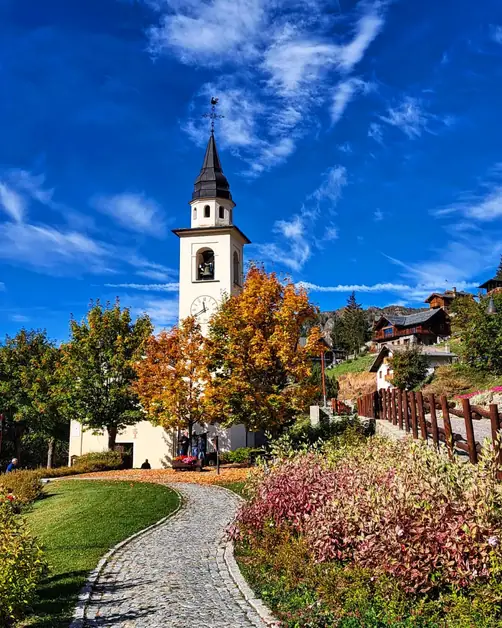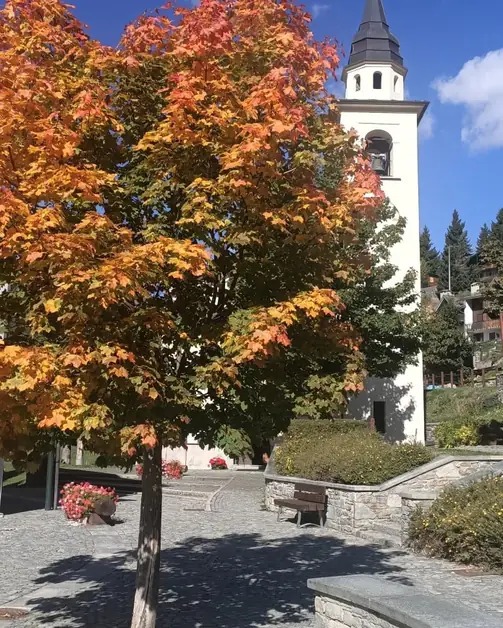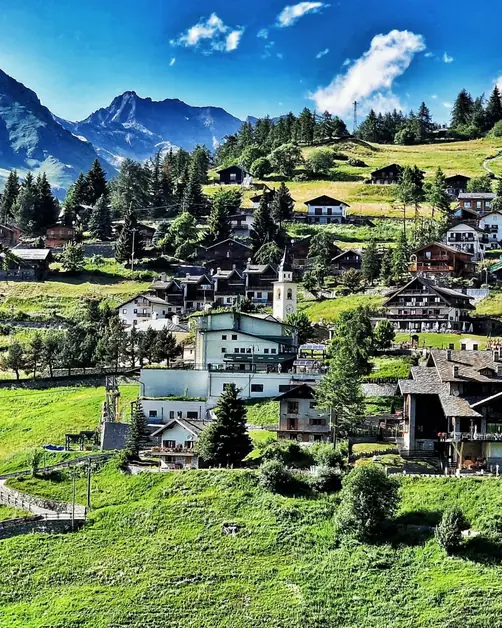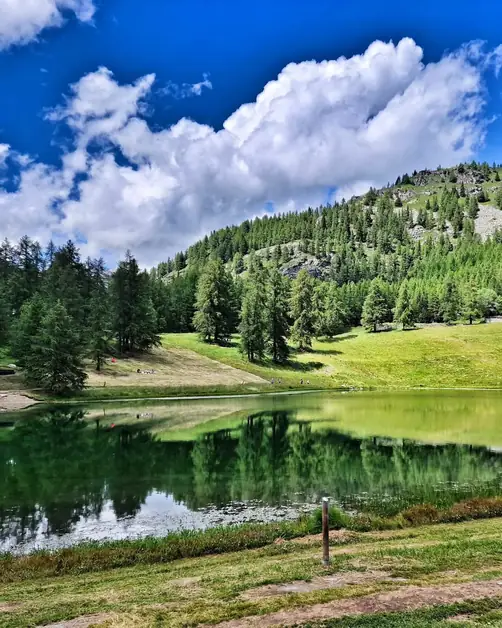The fascinating history of Chamois church
Explore the history and significance of Chamois church.

From which parish did Chamois depend in the past?
Until the 17th century, the territory of Chamois did not have its own parish. It depended on Antey, the village located further down. This meant that to participate in religious services or receive sacraments, the inhabitants of Chamois had to walk down the paths to Antey-Saint-André. A not easy journey, especially during the long Aosta Valley winters, when snow completely isolated the village.
When was the parish church of Chamois built?
The parish church of Chamois was erected on July 21, 1681, at the behest of Monsignor Bailly. That day represented a fundamental milestone for the local community, which finally obtained its own place of worship independent from Antey. However, the religious history of the village began even earlier. Already in 1621, in fact, there was a rectory in Chamois, a sign of the growing importance of faith in the lives of the inhabitants.
What was the original orientation of the church?
The church has not always had the appearance we see today. Originally, its orientation was different: the main facade was where the presbytery now stands. Only in 1838 was it modified and assumed its current layout. This transformation reflects the needs and tastes of the time, but also the desire to adapt the building to the terrain and the growth of the village.
Why was the orientation of the Chamois church changed?
The modification of the orientation in 1838 was not casual. Religious structures were often adapted for practical or symbolic reasons. In the case of Chamois, the reorganization of the interior spaces and the new orientation may have been motivated by the desire to create a more functional access or to expand the area designated for the faithful. Furthermore, the new layout allowed for better exposure to natural light, an important element in a mountain village.
Who was Monsignor Bailly and what was his role in the history of Chamois?
Monsignor Bailly was a prominent figure in the diocese of Aosta. On July 21, 1681, he consecrated the church of Chamois, officially marking the birth of the parish. Thanks to his intervention, the community was able to have its own spiritual reference point. From that moment on, religious rites, celebrations, and festivities took place in the heart of the village, without having to depend on Antey anymore.
What did the church of Chamois look like in past centuries?
The original appearance of the church was very different from the current one. The first structures were simpler and more modest, built with local materials such as stone and wood. Over the years, decorative elements, altars, and works of art were added, which today testify to the devotion of the population. The interior, although sober, still retains traces of Valdostan religious art from the 17th and 18th centuries.
What does the parish church represent today for the community of Chamois?
Today, the church of Chamois is not only a place of worship but also a symbol of identity. It represents the continuity between past and present, a meeting point for residents and visitors. During religious festivities, such as those dedicated to the Madonna or the patron saints, the community still gathers in the same nave where, centuries ago, the first masses were celebrated.
Why visit the parish church of Chamois?
Visiting the church means taking a small journey through time. Every detail tells something: the stones of the walls, the restorations, the architectural modifications. Those who love history or sacred art will find it interesting to observe how a religious building can change over time while maintaining its original soul. Furthermore, the panoramic position of the village makes the visit even more suggestive, with spectacular views of the surrounding mountains.
How can the church of Chamois be reached today?
Chamois is a car-free village, accessible only by the cable car that departs from the Buisson fraction, in the municipality of Antey-Saint-André. Once arrived, the church is located in the heart of the village, easily reachable on foot. This aspect makes the visit even more special: the silence, the pure air, and the slow pace of walking create a unique experience.
Are there any curiosities related to the church of Chamois?
One curiosity concerns the change of orientation. Not all visitors know that the original facade was where the presbytery is today. Also, the presence of a rectory as early as 1621 is a fascinating detail that demonstrates how faith was already rooted in the community even before the official construction of the church.



